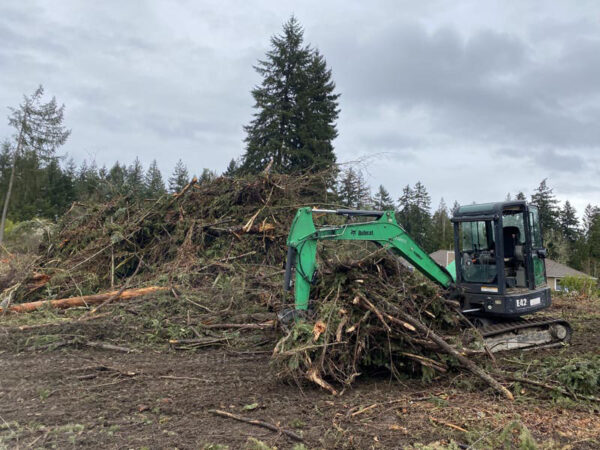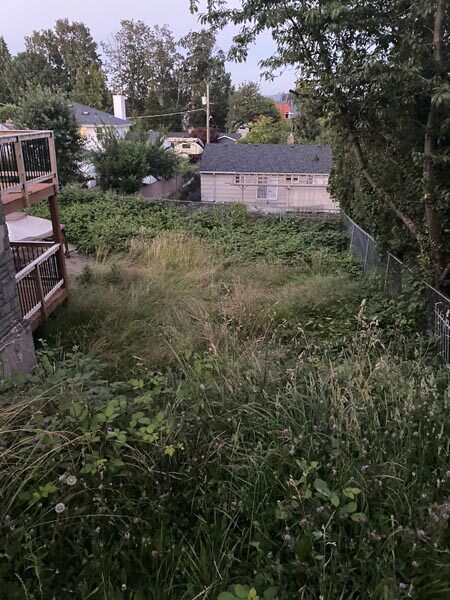Land Clearing is a crucial step in many construction and landscaping projects. At Franky’s Excavation, we offer a range of mechanical land clearing methods to suit different needs and project requirements. Whether you’re preparing land for a new development in Sumner, Washington, or simply need to clear out an overgrown area, understanding the various methods can help you make the best choice for your project.


The type and density of vegetation play a crucial role in determining the most suitable clearing method for a given area. Different methods are better suited for different vegetation characteristics.
Terrain and soil conditions, such as slope and soil type, affect the feasibility and safety of certain clearing methods. For example, bulldozing might not be suitable for steep slopes.
Consider the environmental impact of each method. Some methods, like mastication, leave mulch on the ground, which can prevent erosion and promote soil health.
Budget and time constraints are crucial in deciding the method. Methods like grubbing and excavation can be more time-consuming and costly compared to chipping or mulching.
Mechanical land clearing can be hazardous, so safety precautions are vital. Ensure all operators are trained and equipment is well-maintained. Proper protective gear should be worn, and areas should be cleared of unauthorized personnel during operations.

The process of land clearing typically involves:
Each project may vary slightly depending on specific requirements and conditions. Each project is unique and may vary slightly depending on specific requirements and conditions. Some projects may include additional steps or tasks, while others may be streamlined or simplified. It is important to tailor the project plan to fit the specific needs of the project and the organization.
There are some common elements that are typically found in most project plans, including:
By following a structured approach and tailoring the project plan to fit the specific needs of the project, organizations can increase the likelihood of project success.
Mechanical land clearing is used for its efficiency and effectiveness in preparing land for development, agriculture, and other purposes. It’s particularly valuable in areas like Sumner, Washington, where rapid growth demands quick and reliable land preparation methods.
Our team of skilled professionals, equipped with state-of-the-art equipment, is dedicated to delivering exceptional results for your land in Sumner, Washington. We offer a wide range of mechanical land clearing methods, ensuring we have the optimal solution for any project.
At Franky’s Excavation, we prioritize safety, efficiency, and customer satisfaction in all our land clearing projects. We work closely with our clients to understand their goals and develop a tailored plan that meets their budget and timeline. Our commitment to excellence sets us apart, and we are proud to be the trusted choice for land clearing services in Sumner, Washington.
Contact Us today to schedule a consultation and learn more about how we can assist with your land clearing needs. Together, we can transform your land into a ready canvas for your future endeavors.
Contact Information:
Mechanical land clearing involves using heavy machinery and equipment to remove vegetation, trees, and brush from a land area. This method is used to prepare land for construction, agriculture, or landscaping projects. It is efficient and effective for large-scale clearing tasks.
For dense vegetation, bulldozing is often the best choice. It uses a bulldozer to push trees, shrubs, and other vegetation out of the way quickly. This method is ideal for flat terrains and large areas where dense vegetation needs to be removed efficiently.
Several factors should be considered, including:
Mechanical land clearing can have varying environmental impacts depending on the method used. Methods like mastication and mulching are more environmentally friendly as they produce mulch that can prevent erosion and promote soil health. However, other methods, such as bulldozing, can disturb the soil and disrupt local habitats.
Franky’s Excavation offers a range of mechanical land clearing methods tailored to meet the specific needs of your project. Our expertise ensures that your land in Sumner, Washington, is cleared efficiently and effectively, with a focus on safety and environmental considerations. Contact us today to learn more about how we can assist with your land clearing needs.
Mechanical land clearing involves using heavy machinery and equipment to remove vegetation, trees, and brush from a land area. This method is used to prepare land for construction, agriculture, or landscaping projects. It is efficient and effective for large-scale clearing tasks.